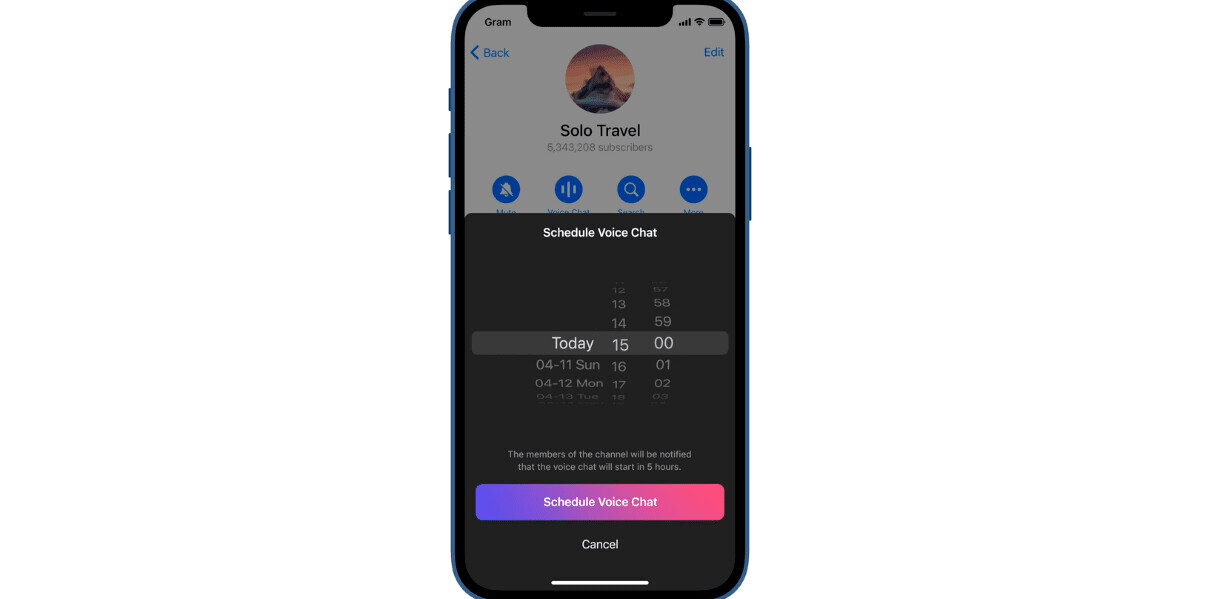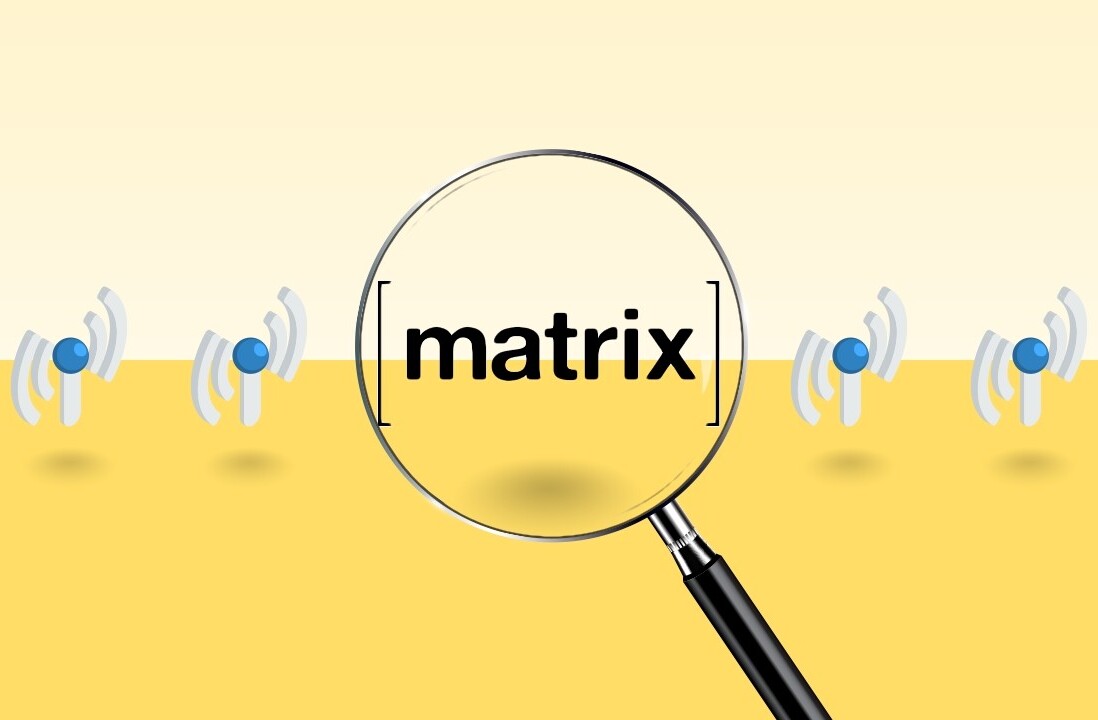Saying good morning, in person, to a coworker you don’t know is perfectly normal. Sending a private message to a coworker you don’t know to say good morning is…weird. If not downright creepy.
Look, that’s just how it is. I don’t make the rules.
Seriously, though: the difference between these two interactions is real, which is part of why remote work is lonely. There’s also not really any context for serendipitous small talk — you won’t run into anyone in the hallway, for example. All of this makes it hard to connect with coworkers, let alone make friends with them.
But that’s not to say it’s impossible. I’ve been working from home for over a decade. Learning to reach out to the people I work with is a key part of how I’ve made it work. The conversations keep me sane when things get hard. The connections give me more reasons to care about what I’m doing. And the friendships I’ve made along the way have lasted much longer than the jobs themselves. But all that only happens if you reach out — without being weird about it.
Need help with small talk? Your friendly neighborhood robot can lend a hand. Zapier connects your favorite apps, so you can automatically send a DM whenever certain trigger events happen. Check out Zapier’s integrations for Slack and Microsoft Teams to get started.
[Read: ]
Why reaching out can feel weird
Let’s get back to saying “Good morning.” Why is it so different to say that in a direct message, as opposed to saying it out loud in an office? The weirdness, I think, comes down to choice. Saying “Good morning” out loud is reflexive because we’re conditioned to do it. You saw a person, it was morning, so you said good morning like a normal human person.

Typing “Good morning” and sending it as a direct message, meanwhile, isn’t reflexive at all; on the contrary, it’s an active decision you made. You looked for that coworker, clicked their profile, then used your fingers to type a message. That effort, small as it is, changes the context and meaning of the statement. Even if the literal words are only “Good morning,” the context creates the expectation that you want…something. That can feel weird. The good news: we now understand why this is weird, which means we can make it less weird.
The solution: explain why you’re reaching out. It’s really not any more complicated than that.
Don’t say hello without context, and don’t ask someone if they “have time to talk.” Always give a reason why you want to talk to someone.
Reach out to team members and offer to help
Whenever a new person joins my team, I like to reach out and tell them I’m around if they have any questions.

I do this to be helpful, first and foremost, but it’s also a great opening for a conversation. I’ll ask how people are finding the job so far, then maybe ask some questions about where they live. Remember: you’re not going to run into new employees in the break room, so you’ve got to create these sorts of conversations yourself. It can feel a little weird, but it’s the only way these chats will happen.
Respond privately to comments made in public channels
Another way to start a conversation is to respond privately to something someone said in a public channel. My Zapier coworker Katie told me a few ways she’s done this over the years, and I think it’s a great list.
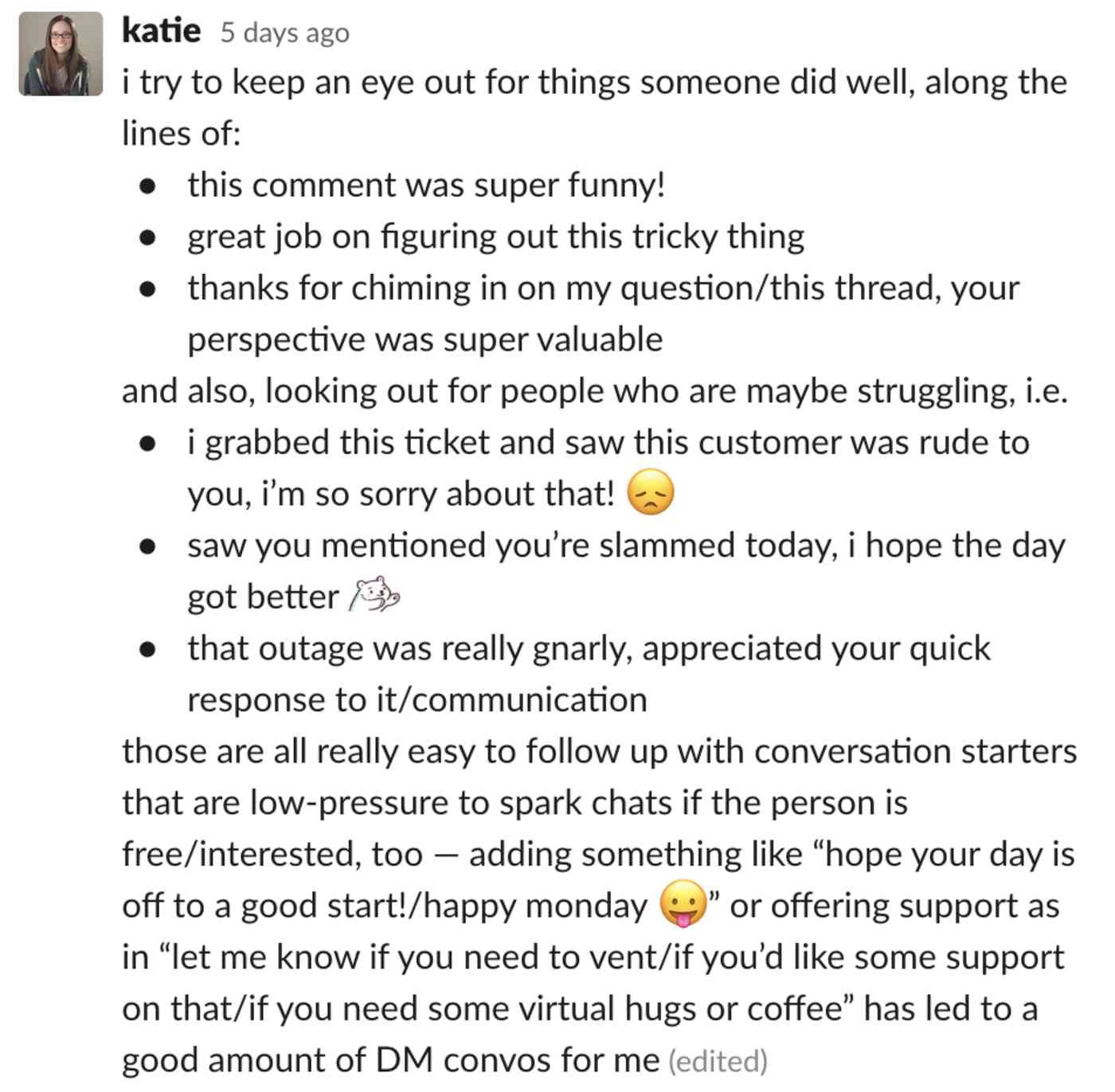
Katie actually reached out to me a year ago with one of these strategies.

It turns out I really like being told I’m funny, because now we talk regularly. I’m not sure what that says about me.
Be vulnerable
Another idea is to share something about yourself. My coworker JC calls this offensive vulnerability, and it works.
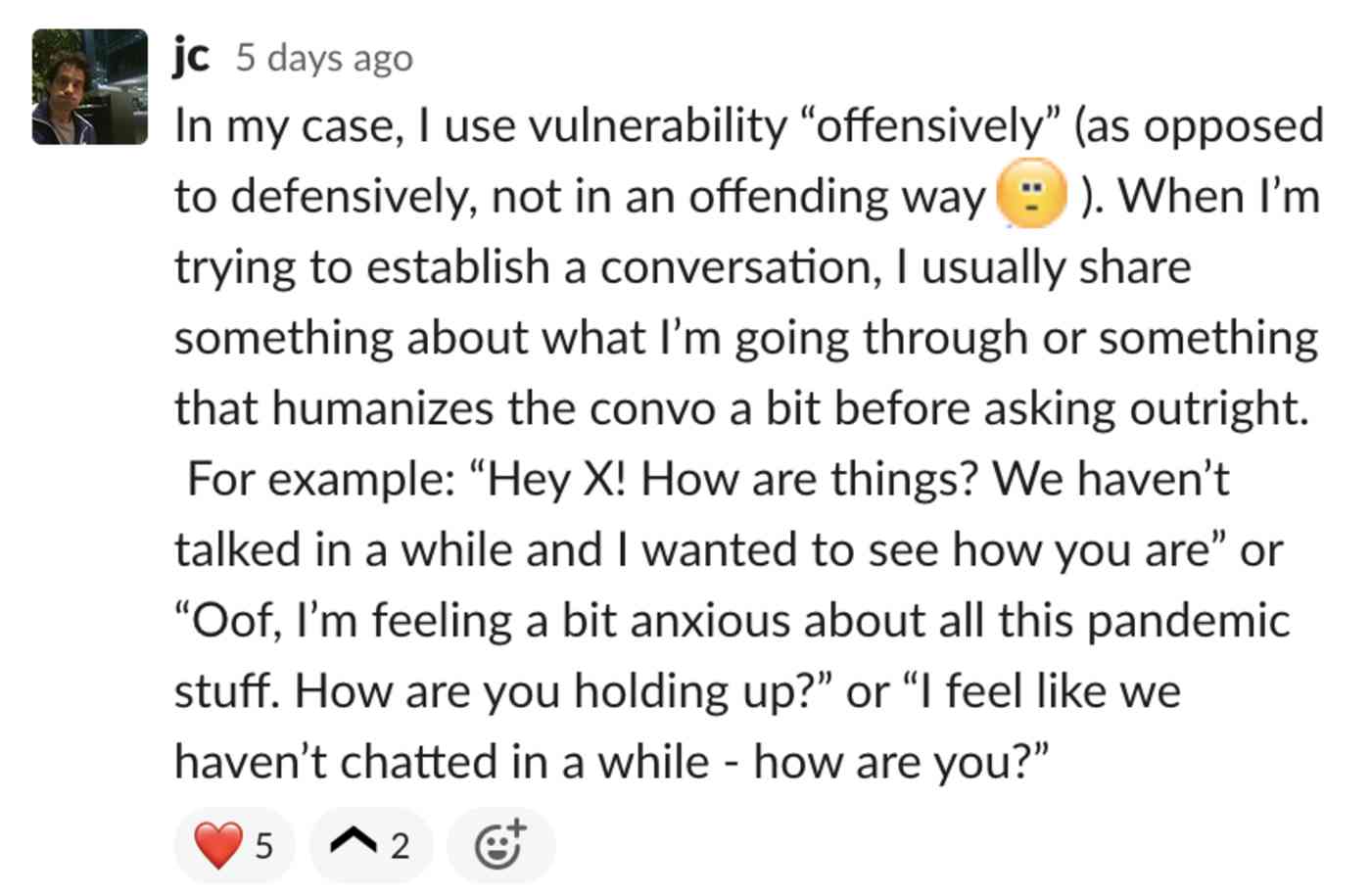
It’s also okay if you can’t think of a reason to talk: Just explain that all you want to do is say hello. I find this is enough to remove the weirdness of just saying “hi,” especially if you frame it using a little humor. That’s my general strategy.

Don’t take delays personally
Did you reach out to someone? Good. Now go do something else.
It can be tempting to leave the window open and wait for a response, and sometimes people will respond immediately. But sometimes they won’t, and that’s okay. Everyone at your company has things to do, and that means not responding to every message right away. This can be a bit of an adjustment if you’re accustomed to in-person conversation, but it’s important that you get used to it. It’s nothing personal—just the nature of online communication.
You, presumably, also have things you should be doing. Do them! You’ll hear back eventually.
Respect the back-and-forth
The best in-person conversations are not one-sided—they have a natural give and take. Online conversation also works best this way, even if it doesn’t happen in real time. If you want your conversations to feel natural, you need to respect this back-and-forth. This means asking a question, waiting for people to respond, and only following up after that happens.
Do not, under any circumstances, send a trickle of messages to someone you only kind of know. That is going to be weird for everyone involved.
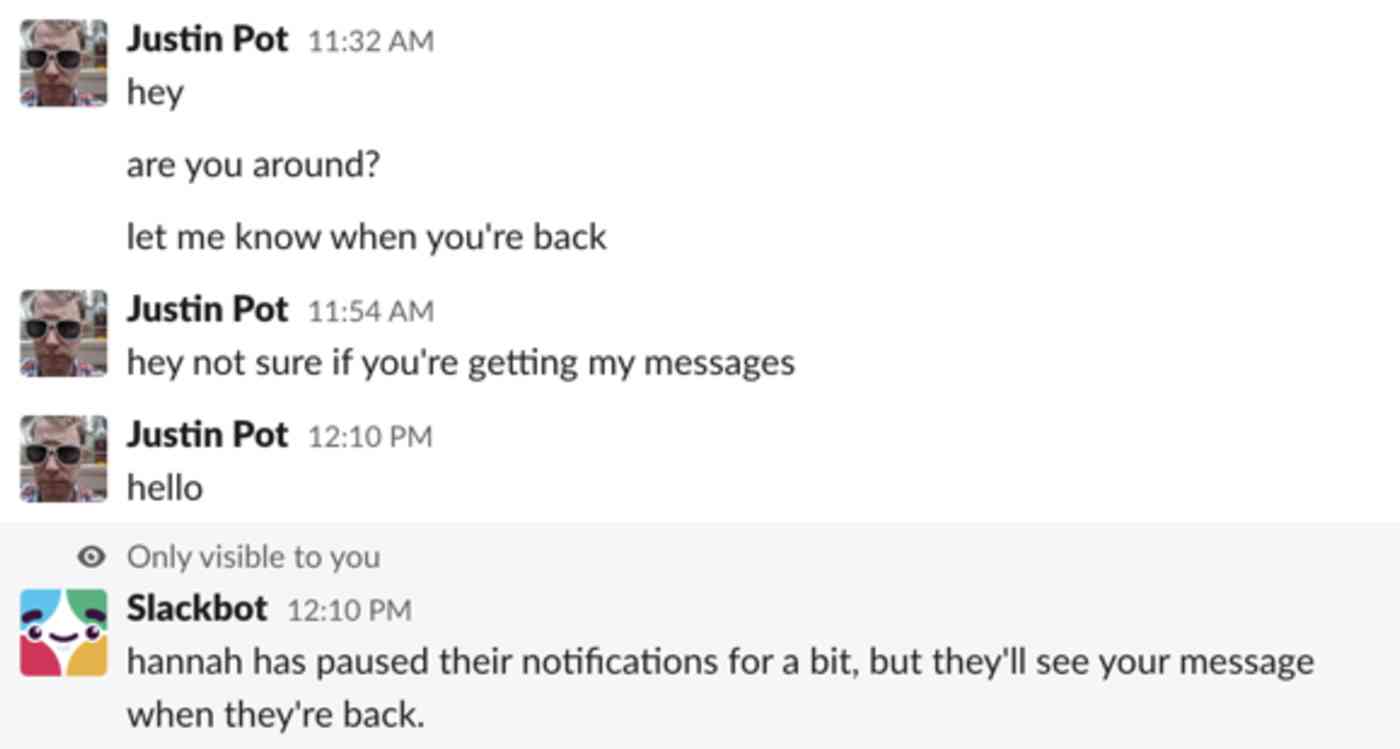
Don’t make it weird. Send one message, then wait for a response. Assume that your coworker saw the message and will respond, or not, on their own time. Don’t follow up on the same day (unless you actually need a response, for work reasons).
There’s always the chance that someone legitimately didn’t see your message, or saw it and forgot to respond. If you think that’s the case, it’s probably okay to send another message, ideally the following day. But if someone continually doesn’t respond when you reach out, please: take the hint. Some people won’t want to talk to you outside a work context, and that’s okay. Sure, it would be nice of them to be transparent about it and let you know they’re not interested in chatting, but regardless, don’t press the issue.
Respect people’s status and set your own
Apps like Slack let you set a status, which is a great way to let people know that you’re doing focused work or that you’re otherwise unable to respond. Pay attention to these and don’t reach out to chat when someone is busy.
For example, I try not to use Slack while I’m writing, so I set my status in Slack to “Writing,” complete with a typewriter emoji.

My coworkers know that I won’t respond quickly when they see this status.
You should also set up a status for yourself. You can do this manually, or you make it so your Slack status changes automatically based on your calendar, time tracking app, or to-do list. Either way, it helps your coworkers know when you’re available to chat and when you’re not.
Small interactions matter
Working from home can be lonely, but it doesn’t have to be. It’s just a matter of learning how to communicate in a different environment. And you should take the time to learn this skill because small interactions throughout the day matter—and they can lead to lasting relationships.
We’re all human. We want to be seen by others, and to see others clearly. We need connection. There’s nothing weird about that. Just take the time to learn how to best do this online, in ways that make everyone comfortable.
Speaking of weird: the above screenshots where I was being all creepy were staged.
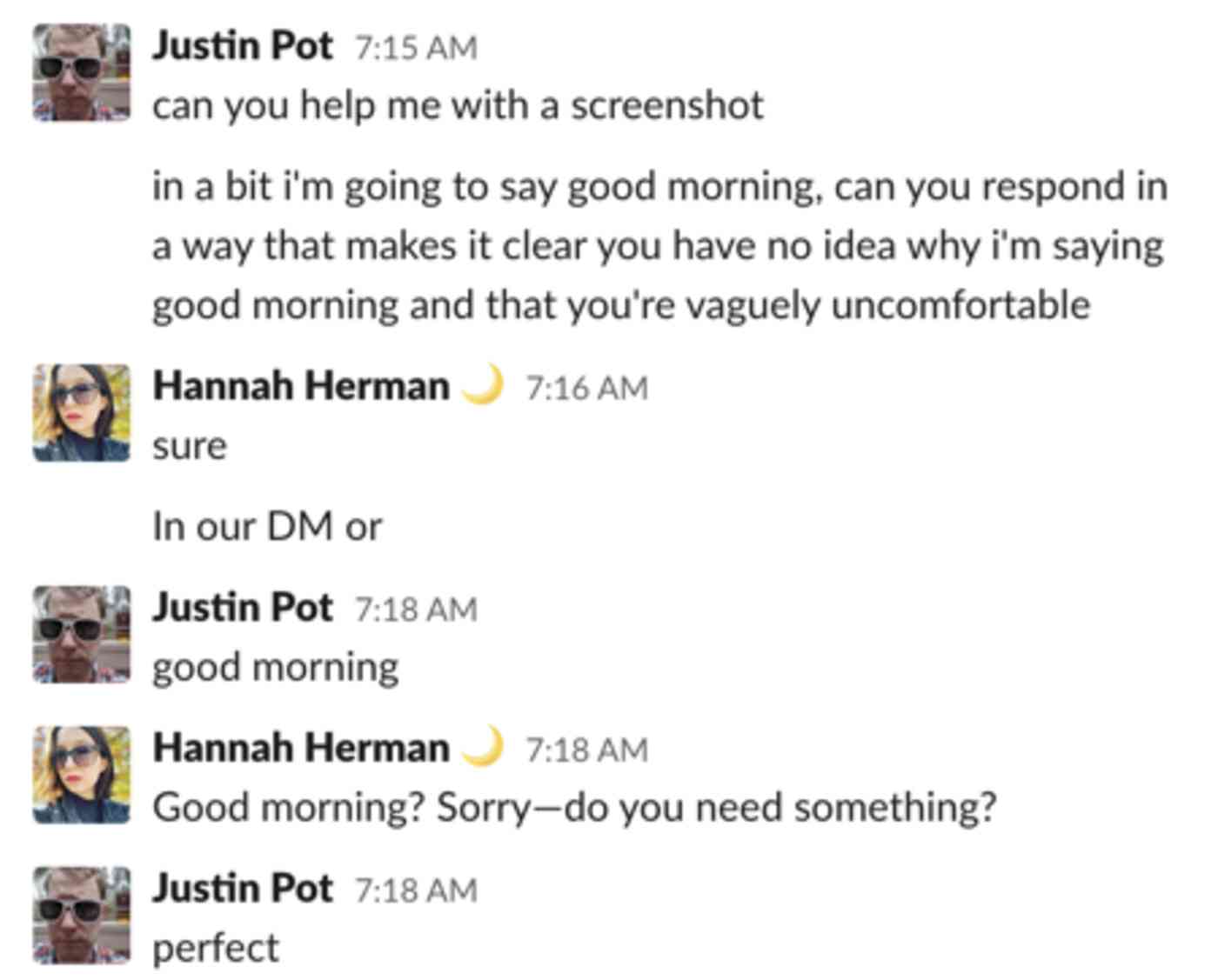
Just wanted to clear that up.
Get the TNW newsletter
Get the most important tech news in your inbox each week.


